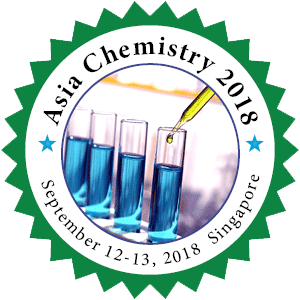
Gabor Patonay
Georgia State University, USA
Title: Fluorescent Dye Copolymerized Silica Nanoparticles for Analytical Applications
Biography
Biography: Gabor Patonay
Abstract
Recent trend for fluorescence detected analytical applications is the use of longer wavelength fluorophores and encapsulation of fluorophores by utilizing nanoparticles. Many applications can be cited such as separations, antibody detection, biomolecule charachterizations, etc. Long wavelength fluorescence in analytical chemistry has several advantages such as lower background interference especially in biological matrices. While many different types of nanoparticles have been utilized for, silica nanoparticles have significant advantages in biological system. Silica nanoparticle synthesis for copolymerization of fluorescent dyes an easily controllable process by using modified TEOS reactive analogues. The fluorescence of silica nanoparticles can significantly be increased by enclosing a large number of dye molecules. For high dye concentrations in the silica nanoparticle self quenching can be significant but it can be minimized by synthesizing large Stokes’ shift dyes or resonance energy transfer. Using NIR dyes excellent sensitivity can be achieved but one major disadvantage is that most biological fluorescence instruments are designed for shorter excitation wavelengths frequently matching the optical properties of fluorescein, a widely used fluorophore. One approach to make these new fluorescent silica nanoparticles more compatible with widely used excitation wavelengths is the development of fluorescent silica nanoparticles containing dyes that are good candidates for fluorescence energy transfer. This presentation discusses the facile synthesis and analytical applications of such silica nanoparticles containing copolymerized multiple fluorophores. The surface properties of fluorescence silica nanoparticles were modified by adding hydrophobic or hydrophilic molecules on the surface to achieve biocompatibility. Biocompatibility was evaluated by hemolytic experiments. Typical applications of these particles are for immunochemistry, flow cytometry, CE, forensic applications, etc. They are also suitable for biomolecule characterization utilizing their specific binding characteristics to biomolecules. Modifying surface properties of silica nanoparticles enhances their analytical utility. Examples will be given for applications of modulated surface hydrophobicity and chirality.

